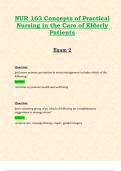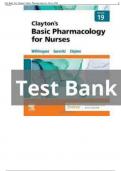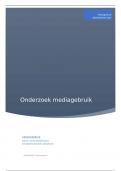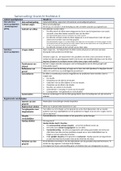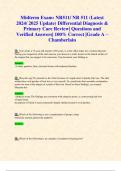Exam (elaborations)
TEST BANK FOR Primary Care: Interprofessional Collaborative Practice 6th Edition by Terry Mahan Buttaro , ISBN: 9780323570152 All Chapters 1-228 ||COMPLETE GUIDE A+
Test Bank for Primary Care: Interprofessional Collaborative Practice 6th Edition by Buttaro. All Chapters 1- 228 Questions And Answers in 260 Pages. All Answers Are Correct. Primary Care : A Collaborative Practice, 6th Edition Terry Buttaro, JoAnn Trybulski, Patricia Polgar-Bailey Joanne Sandberg-C...
[Show more]




